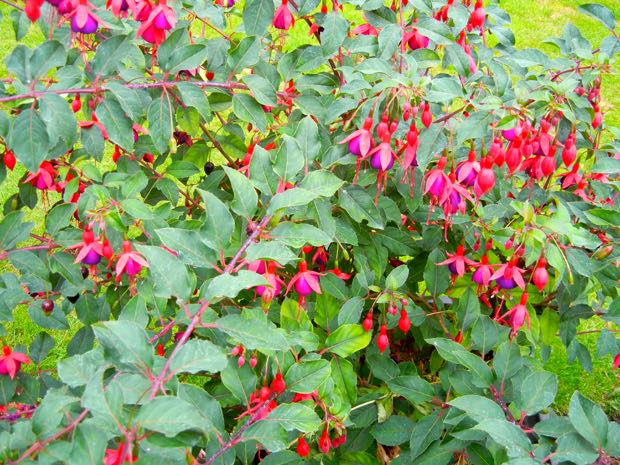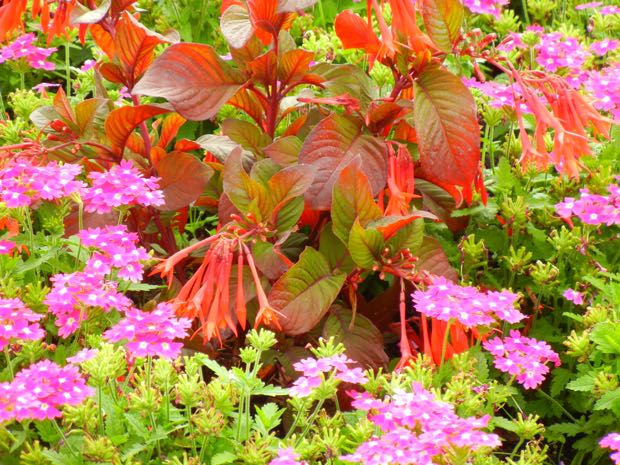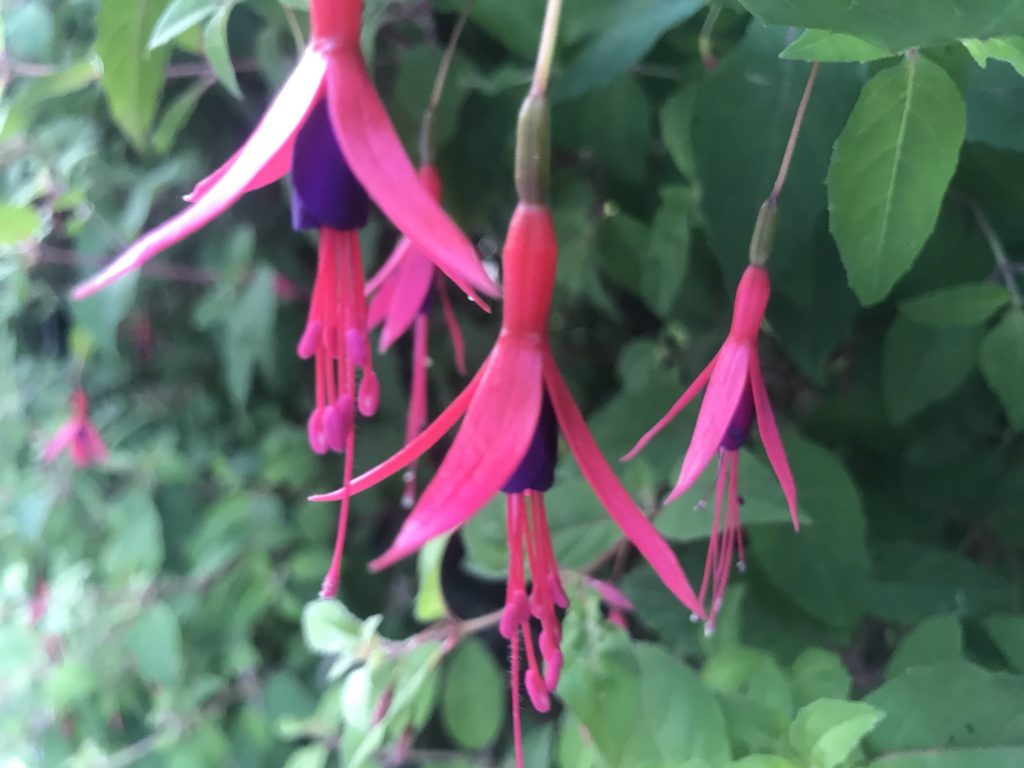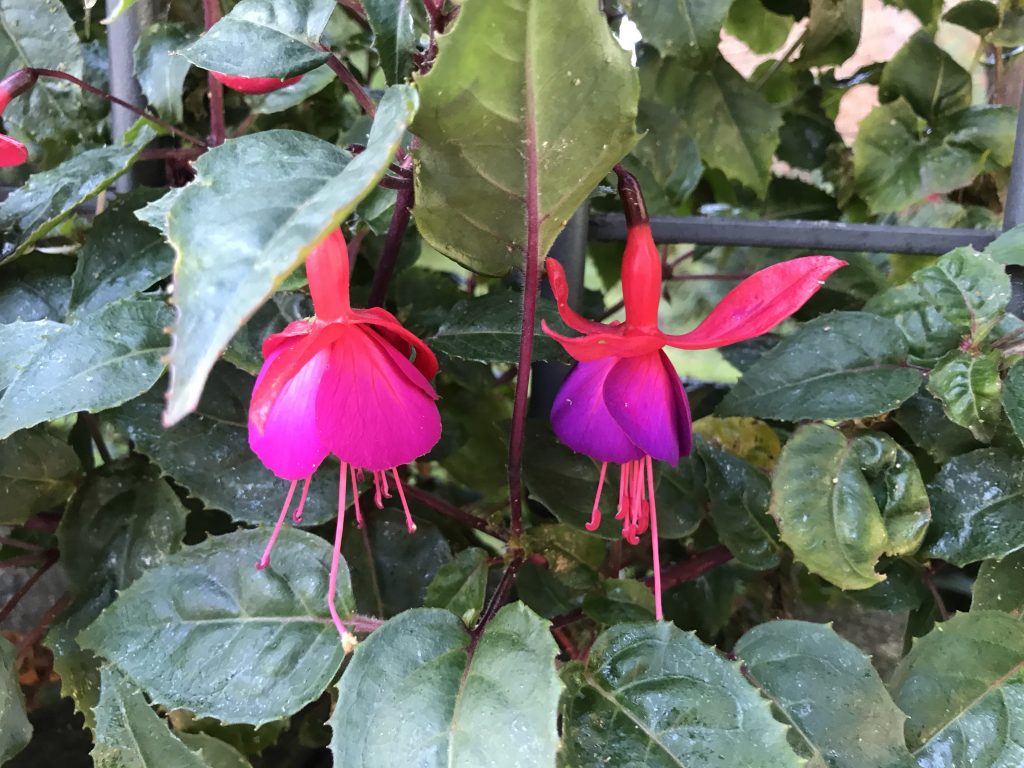Fuchsia: The Enchanting Lady’s Eardrops
Fuchsia, a captivating genus of flowering plants, belongs to the Onagraceae family. These predominantly shrubby and small tree species have a rich history, with their genus name paying homage to the renowned German botanist Leonhart Fuchs (1501-1566). With approximately 110 species, Fuchsias are primarily native to Central and South America, showcasing their beauty and diversity in these regions. Let’s explore the fascinating details of Fuchsia, including its varieties, characteristics, cultivation, and care requirements.
Family, Origin, and Discovery: Fuchsia finds its place within the Onagraceae family, a plant family known for its beautiful flowering species. The genus was named by Charles Plumier, a botanist, in honor of Leonhart Fuchs. Fuchsias are primarily native to Central and South America, where they have thrived in their natural habitats for centuries.
Varieties and Diversity: Fuchsia encompasses a wide range of species, boasting approximately 110 recognized variations. These species exhibit a captivating array of colors, shapes, and sizes, captivating the hearts of gardening enthusiasts and plant lovers worldwide. From elegant hanging varieties to shrubby bushes, Fuchsias offer a plethora of options for every garden style.
Characteristics and Description:
Fuchsias can be either evergreen or deciduous, displaying their unique characteristics throughout the seasons. The leaves of Fuchsias are typically arranged opposite each other or in whorls, showcasing lanceolate shapes. They thrive in moist environments, thriving best when exposed to ample sunlight or partial shade.
Flowers and Fragrance: The flowers of Fuchsia dangle elegantly like teardrops, earning them the whimsical nickname “Lady’s Eardrops.” The blooms feature a fascinating combination of short and long sepals, often adorned with vibrant hues. While many species display red sepals and purple petals, the color palette of Fuchsia encompasses a wide spectrum, ranging from white and pale pink to deep purples and vivid reds. The flowers add a touch of elegance and allure to any garden space, and their pendulous nature makes them particularly attractive to hummingbirds.
Flowering Season: Fuchsias bless gardens with their vibrant blooms from early summer until the end of autumn, allowing for an extended period of floral splendor. Their prolonged flowering season ensures a captivating display of colors and shapes, bringing joy to gardeners and visitors alike.
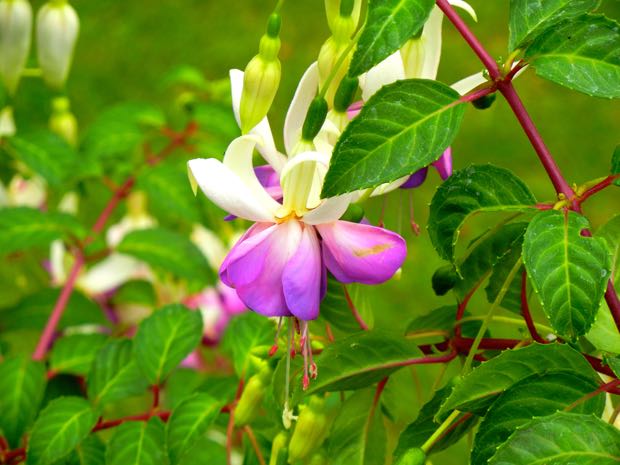
Cultivation of Fuchsia:
Sunlight: Fuchsias thrive when grown in rich, evenly moist, and well-drained soil. While they appreciate a sunlit environment, providing them with partial shade can prevent excessive exposure and help maintain their optimal health.
Watering: Fuchsias enjoy consistent moisture in the soil, requiring regular watering to keep the soil evenly moist. Avoid overwatering, as excessive moisture can lead to root rot and other issues. Mulching the soil can help retain moisture and regulate soil temperature.
Soil: Ensure the soil provided to Fuchsias is rich, well-drained, and fertile. This enables proper nutrient absorption and promotes healthy growth and flowering.
Pests and Diseases: While Fuchsias are generally resilient, they can be susceptible to common garden pests such as aphids, spider mites, and whiteflies. Regular inspection and appropriate pest management, such as using insecticidal soap or neem oil, can help protect the plants. Additionally, ensure good air circulation and proper spacing to prevent fungal diseases.
Propagation: Fuchsias can be propagated through cuttings, which are best taken in late summer. This method allows for the successful cloning of desirable traits and ensures consistent growth and characteristics in new plants. It’s important to note that hybrid cultivars may not grow true to their parent when propagated from seed, so cuttings are often the preferred method for maintaining desired traits.
Fuchsia’s delicate beauty and remarkable variety make it a cherished addition to gardens and landscapes. Whether displayed in hanging baskets or showcased in shrub borders, Fuchsias never fail to captivate with their enchanting flowers and graceful presence. Embrace the allure of Fuchsia, and experience the joy it brings as it thrives and blossoms in your garden.




